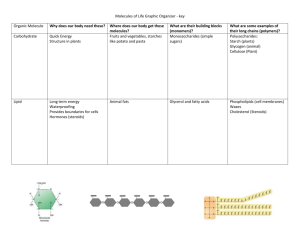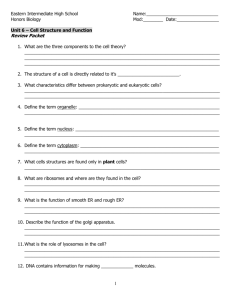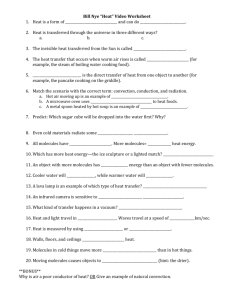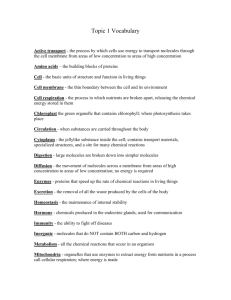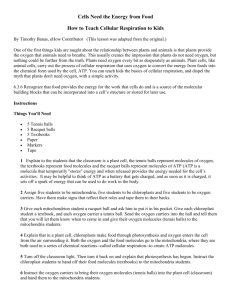Student Brief
advertisement
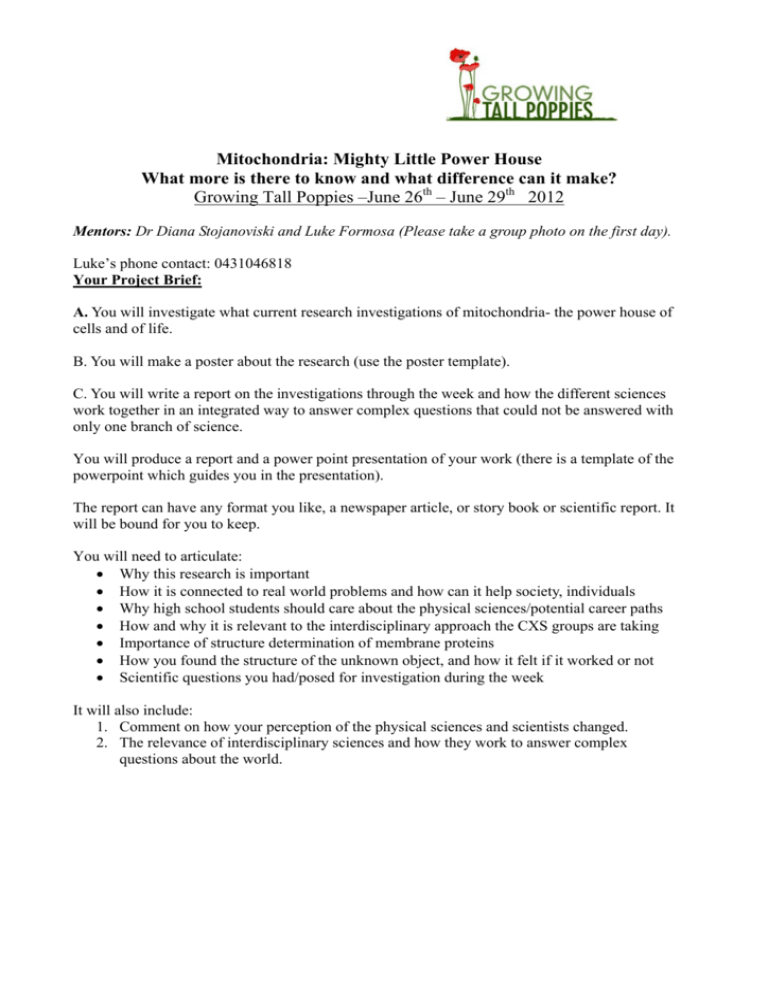
Mitochondria: Mighty Little Power House What more is there to know and what difference can it make? Growing Tall Poppies –June 26th – June 29th 2012 Mentors: Dr Diana Stojanoviski and Luke Formosa (Please take a group photo on the first day). Luke’s phone contact: 0431046818 Your Project Brief: A. You will investigate what current research investigations of mitochondria- the power house of cells and of life. B. You will make a poster about the research (use the poster template). C. You will write a report on the investigations through the week and how the different sciences work together in an integrated way to answer complex questions that could not be answered with only one branch of science. You will produce a report and a power point presentation of your work (there is a template of the powerpoint which guides you in the presentation). The report can have any format you like, a newspaper article, or story book or scientific report. It will be bound for you to keep. You will need to articulate: Why this research is important How it is connected to real world problems and how can it help society, individuals Why high school students should care about the physical sciences/potential career paths How and why it is relevant to the interdisciplinary approach the CXS groups are taking Importance of structure determination of membrane proteins How you found the structure of the unknown object, and how it felt if it worked or not Scientific questions you had/posed for investigation during the week It will also include: 1. Comment on how your perception of the physical sciences and scientists changed. 2. The relevance of interdisciplinary sciences and how they work to answer complex questions about the world. Introduction Imaging Techniques like microscopy are used in the sciences, especially the biological sciences to observe ”the unseeable”. Knowing the structure i.e. the shape and arrangement of objects means that we can understand them and compare them to other things. It allows us to organise information and find patterns. When we know the shape of an object it means that we can form other objects to fit around them – like a lock and key system and this can be very useful for designing drugs to cure diseases caused by small biologically active molecules. The light microscope has been used for centuries to see objects about the size of a cell and more recently electron microscopes have been developed to see objects that are within cells. Some molecules which are even smaller than sub-cellular structures have been observed using X-ray crystallography methods and important molecules such as DNA have been structured this way. Not all molecules are easily observable using the above methods and recently the influenza proteins were characterised using X-ray sources from a Synchrotron by Australian scientists who then developed Relenza, a drug that is now used as a cure for the influenza virus. Thus being able to find the structure of molecules can lead to important cures for diseases that can cause societal and economic devastation such as Malaria (see prior project on the GTP website). The biological molecules that are now of great interest to biologists are the membrane proteins of various diseases. These proteins are elusive in that they do not crystallise very well and new techniques are required to get the structure. New imaging techniques are needed using properties of light never before used, such as the phase characteristics of light. It is this particular group in the CXS interdisciplinary centre of excellence that deals with developing the techniques that the biologists of the near future will use to understand disease and formulate a cure. Mitochondria Below are some sites for you to explore in preparation for your week investigating mitochondria – the power house of the cell and there for of life; You have also been sent some work sheets to do and bring with you. What-ever you do not find out gives you opportunities to ask questions. This site provides a basic description of what mitochondria are: http://www.historyoftheuniverse.com/?p=mitochon.htm A bit about mitochondria and mitochondrial disease, there is a nice 5 minute video under the first section. Just see if it is aimed at their level. http://www.mitoaction.org/mito-faq#whatare A bit about DNA: Please go to this website http://www.dnaftb.org/?gclid=CMGT4I2lyLACFYhLpgoddydvVg#classical You are to work through the basic ideas of genetics, molecules and DNA. Enjoy reading these pages and watching the animations. Go to view cells: some fun cartoons about cells http://www.biologyjunction.com/unit3_cells.htm#POWERPOINTS 2

